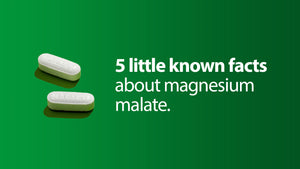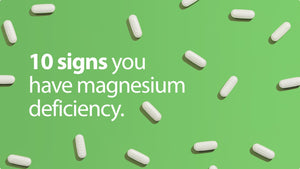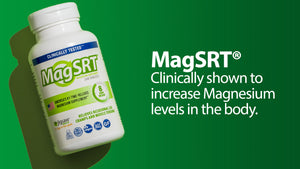By Sarah Clachar, Health Writer
If you eat a healthy diet, heavy on fruits and vegetables, whole grains, lean meats, beans, nuts, and seeds — and short on processed vegetable oils, sugar, and white-flour products — you may think you have your nutritional bases covered.
You may believe you don’t have to take a multivitamin because your diet gives you all the vitamins and minerals you need. You might even think they’re a waste of money.
But, the truth is, while you may feel good about yourself for choosing salmon over a hamburger, broccoli over fries, and sparkling water over soda,
it’s darn near impossible to get all the nutrients you need from your diet. Which makes taking a high-quality multivitamin in this day and age not just a good investment — but a necessity. Consider these facts:
Fact #1: You don’t eat as many fruits and vegetables as you think you do.
In 2000, a group of researchers posed an interesting question: How accurate are people at remembering what they eat on an average day? Very accurate? Fairly accurate? Or just plain wrong?
The researchers compared
how many servings of different food groups study participants thought they ate on an average day versus how many they actually ate. The results were fascinating. Men believed they ate 2.1-2.2 servings of fruit a day. The actuality? They ate less than one serving — half the amount they thought. Women thought they ate 2.5-2.6 servings of vegetables a day. The truth? They ate only 1.7-2.2 servings. At the same time, both men and women under-estimated their consumption of grains, fats, oils, and sweets. Apparently, we see our diets through rose-colored glasses.
Fact #2: The vegetables you do eat don’t have as many vitamins and minerals as they did 50 years ago.
Did you know that, according to USDA data, a serving of broccoli grown in 1962 had 103 mg of calcium…but a serving of broccoli grown in 1992 had only 48 mg? That’s a 53% drop in three decades!
In 1962, your average orange contained 200 IU of vitamin A. In 1992? Just 21 IU. A full 90% less.
Also in ‘62, a serving of collard greens gave you 57 mg of magnesium, a good contribution toward your daily requirement of 400 mg. But in ‘92, that amount nosedived to just 9 mg per serving — an 84% tumble.
What this means is that while seven servings of collard greens would have given you all the magnesium you needed for the day in 1962, by 1992, you had to eat 34 servings to get that same amount! Due to shifting agricultural practices, modern food is positively nutrient-starved!
Fact #3: You simply don’t eat enough food each day to meet all of your vitamin and mineral requirements.
If you’re still not convinced of the need to take a high-quality multivitamin, then take a look at this simple math equation. Listed below is a sample menu that reflects a pretty darn healthful day of eating. Let’s see how close it comes to fulfilling your nutritional requirements for the following 6 key vitamins and minerals: vitamin A, vitamin C, vitamin D, calcium, magnesium, and zinc.*
-
Breakfast: One cup oatmeal, one 8 oz. glass orange juice
Vitamin A: 496 IU, Vitamin C: 124 mg, Vitamin E: 0.29 IU, Calcium: 48 mg, Magnesium: 56 mg, Zinc: 2.46 mg -
Snack: One slice whole wheat toast with 1 oz. cheese
Vitamin A: 285 IU, Vitamin C: 0 mg, Vitamin E: 0.22 IU, Calcium: 234 mg, Magnesium: 24 mg, Zinc: 1.38 mg -
Lunch: One cup romaine lettuce with 3 oz. of salmon
Vitamin A: 2835 IU, Vitamin C: 12 mg, Vitamin E: 0.75 IU, Calcium: 54 mg, Magnesium: 35 mg, Zinc: 0.59 mg -
Snack: One medium apple
Vitamin A: 98 IU, Vitamin C: 8 mg, Vitamin E: 0.33 IU, Calcium: 11 mg, Magnesium: 9 mg, Zinc: 0 mg -
Dinner: One cup lentil soup, ½ cup brown rice, one cup broccoli
Vitamin A: 1215 IU, Vitamin C: 52 mg, Vitamin E: 1.3 IU, Calcium: 70 mg, Magnesium: 136 mg, Zinc: 2.85 mg
Does this healthy menu cover your nutritional bases?
| Nutrient | TOTAL | Daily Value | Percent of DV |
| Vitamin A | 4929 IU | 5000 IU | 99% |
| Vitamin C | 185 mg | 60 mg | 300% |
| Vitamin E | 3 IU | 30 IU | 10% |
| Calcium | 418 mg | 1000 mg | 42% |
| Magnesium | 260 mg | 400 mg | 65% |
| Zinc | 6 mg | 15 mg | 40% |
*Data provided by the USDA National Nutrient Database for Standard Reference: http://www.nal.usda.gov/fnic/foodcomp/search/
As you can see, while this healthful day of eating fulfilled the daily value of two of the six essential vitamins and minerals we’ve tracked — it missed the mark on four! So even the healthiest diet is still lacking.
3 Facts, 1 Conclusion:
No matter how healthy your diet is, taking a multivitamin should be a no-brainer. Just remember — not all multivitamins are alike. So be sure to choose one that provides more than “pixie dust” dosages of key nutrients. Combine that with a healthy diet and you’ll not only have your bases covered — you’ll increase your chances of a long, disease-free life!
Jigsaw Complete™ is a convenient and effective way to make sure your nutritional needs are covered every day.
References:
- Consumption of Food Group Servings: People’s Perceptions vs. Reality. USDA Center for Nutrition Policy and Promotion. Insight 20. Oct 2000.
- Consumption of Food Group Servings: People’s Perceptions vs. Reality. USDA Center for Nutrition Policy and Promotion. Insight 20. Oct 2000.
- Bergner, Paul. The Healing Power of Minerals, Special Nutrients, and Trace Elements. Rocklin, CA: Prima Publishing, 1997:62.
- Bergner, Paul. The Healing Power of Minerals, Special Nutrients, and Trace Elements. Rocklin, CA: Prima Publishing, 1997:59.
- Bergner, Paul. The Healing Power of Minerals, Special Nutrients, and Trace Elements. Rocklin, CA: Prima Publishing, 1997:62.




















